Keeping the Dream Alive
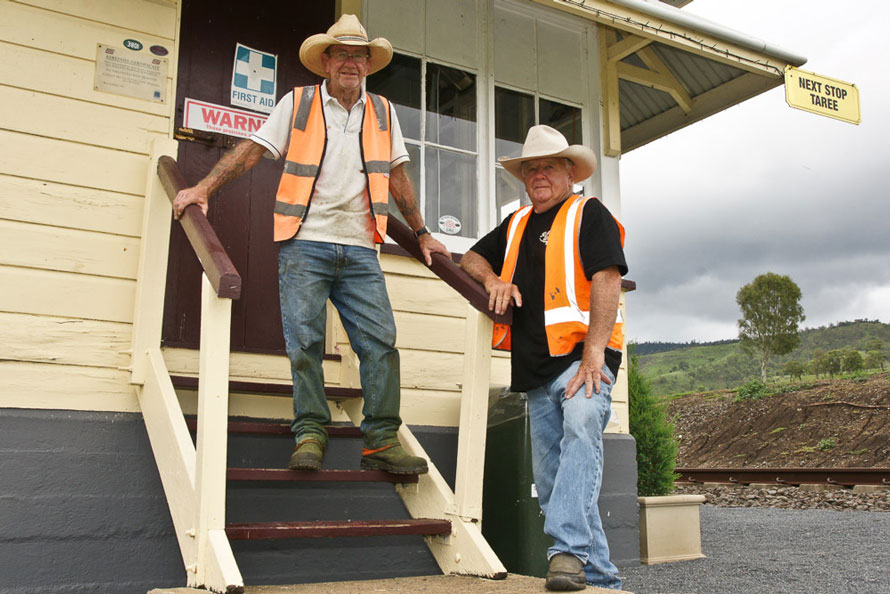
Early on a typical grey, warm and humid January morning, I find myself driving down the rough road that runs alongside the Australian Rail Track Corporation’s (ARTC) crossing loop (siding) at Glenapp, near the border between the states of Queensland and New South Wales. The last time I was here was in 2007 to observe the electric staff working be replaced by the new Remote Control Signalling installations ARTC was putting in on the crossing loops at the north end of its North Coast line. Back then, the vehicle access down to the signal cabin was poor, and hemmed in by rampant vegetation of numerous weedy varieties, while the signal cabin itself looked to be on the verge of going the same way as the electric staff machines it housed. Now, as then, the place is quiet, with just some bird song and an odd low rustling sound in the background.
This time though, while the vehicle access was about the same, it’s not long after turning off Camp Creek Road before I’m driving past what looks like well-tended lawn, vegetation held in check, a smartly painted flag pole with flag, and an enigmatic skull on another smartly painted pole. Driving round the ridge a bit further, I soon see the signal cabin looking in better cosmetic condition than when I was last here, and closer to the creek, a couple of utes, a van, a storage container, various bits of old machinery, a marquee and a large BBQ. I had just arrived at base camp of the Glenapp Boys for breakfast.
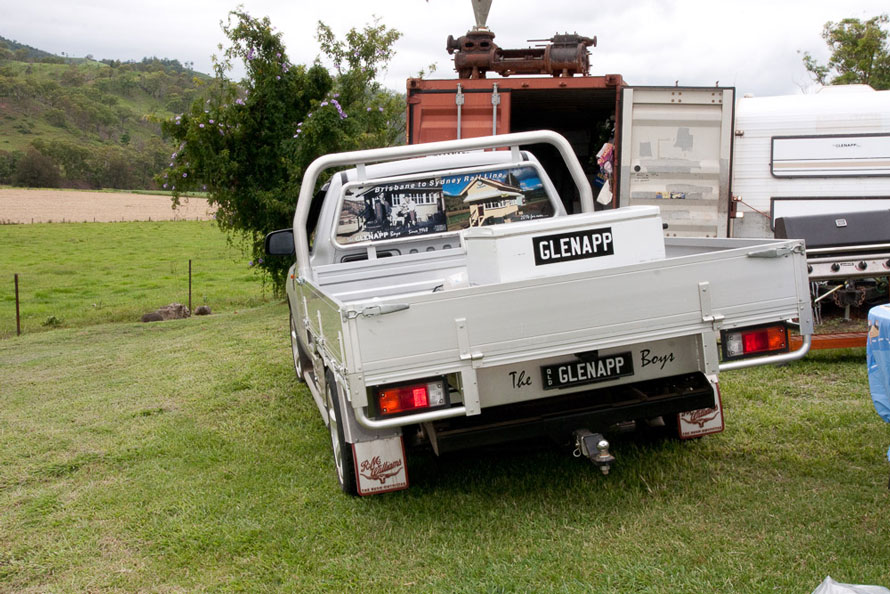
I’d seen mention of the Glenapp Boys through some email exchanges, and seen photos of some of their handiwork, and was keen to find out a bit more about them and why they did what they did. It turns out to be an interesting story of a family’s passion for maintaining tangible links to their early childhood.
The Glenapp Boys are the surviving sons of Reg and Nancy Sibson: Rob, Dennis and Alan. Most Friday afternoons, Rob and Dennis will pack their ute and trailer, leave their homes at the north end of the Gold Coast, drive over to Glenapp, and set up camp for the weekend. Alan, living in Sydney, makes less frequent visits when time permits.
“We started coming here about 2005, and one thing just led to another” says Rob. Indeed, one thing has led to another. At first, The Boys were content to bring a lawn mower from home to keep the grass around the signal cabin and small station building under some semblance of control. But before they knew it, they were pushing the boundaries of the mown grass further and further into the untidy mass of vegetation that marked the rest of the site. Soon, Friday and Saturday nights were spent camped near the signal cabin, the home lawnmower was replaced (“gout and old age made the job too hard!”) with a hired ride-on mower which in turn was replaced by a ride-on they purchased for the job. A large generator to supply power to the site was brought along, and to keep all this and other assorted vegetation clearing equipment safe from the elements and secure while The Boys are away, an old container was bought and taken to the site.
As the bacon, sausages and eggs are being cooked on their large gas BBQ, Rob and Dennis tell me how it all started, with their father, Reg, being in charge of the watering facilities that serviced the steam locomotives at Kyogle, The Risk, Glenapp and Kagaru. “But HQ and home was Glenapp” says Rob.
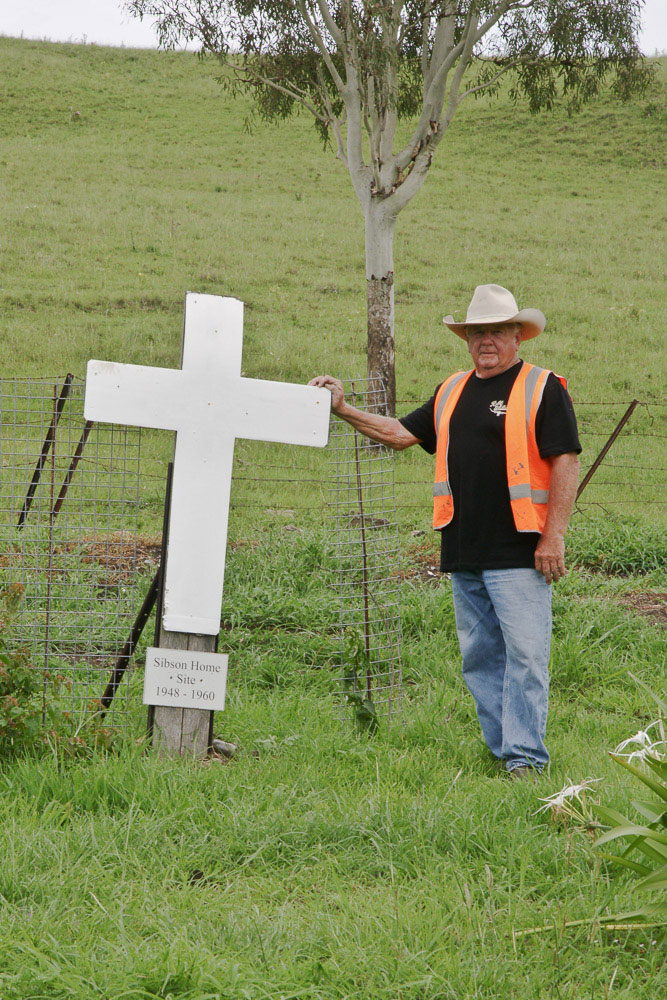
It’s hard to imagine now, but when Reg and Nancy Sibson moved there in 1948, there were five modest houses on the western bank, a station master’s house on the other side of the line near the station building, less permanent tents for the fettlers and of course the infrastructure needed to have treated water available for the steam locomotives as they worked up and down the line. Basic it may have been, but it was home to the Sibson family for twelve years. During their time at Glenapp, the small house on the bank overlooking the main line, the loop and the passing trains was home to Reg, Nancy, Barry, Alan, Rob, Dennis and Yvonne.
It must have been an interesting place to grow up in. “We went to school just over the road at Glenapp State School” says Rob, while going to town meant traveling the eleven kilometers to Rathdowney. If they were lucky, they might have got a lift, but otherwise it would be a long walk there and back.
After breakfast and coffee, Rob takes me for a tour of the site, while Dennis gets stuck into more mowing. Passing a small marker, Rob tells me it’s a small memorial to a fettler who was killed by a passing freight train in 1982. The spot has been further marked by a bougainvillea which hopefully will flourish. More trees, this time jacarandas, have been planted where each of the five houses were located.
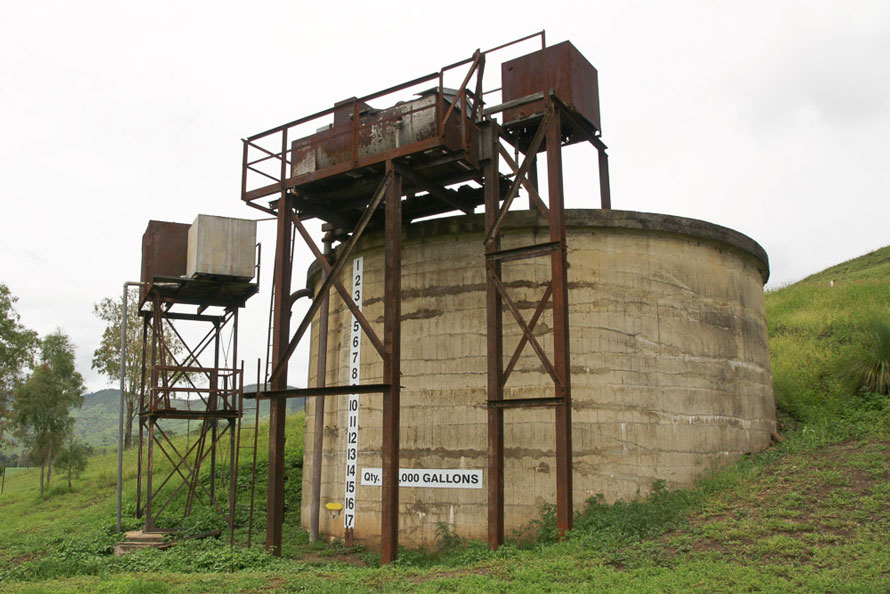
The 100,000 gallon water tank is still there on the high side of the line. The clear lettering on the tank indicating the water level was something of a surprise after all this time, until Rob tells me they’d added them. To avoid any damage to the original structure, they used “stick-a-flex” lettering sourced from a Gold Coast sign writer, using a style of numbering as close to the original as they could. Rob tells me that as kids they used to climb up the ladders on the tank, which would be a terrifying thought in today’s much more safety-conscious society. “But we lived to tell the tale!”
By 1960, diesels were on the north coast line and the need for water facilities had passed. With that, Reg was posted to Sydney although he kept an association with water under pressure, becoming a member of the Railway fire brigade. The children also made their subsequent lives in Sydney, although Rob moved to the Gold Coast to make a living in the high-end of the furniture trade, with Dennis joining a few years later.
The small station building was removed some years ago and can now be found at the nearby Rathdowney Visitor Information Centre and Historical Museum. While the signal cabin certainly looks better on the outside than I remember from my last visit, it’s pretty rough inside. Rot has set in, and there are holes in the internal lining. Still, for now it provides rudimentary shelter for an extensive collection of photos of the site taken over the years. As Rob goes through the displays with me, it’s obvious they are the distillation of many years of fond memories.
Some people go camping, or fishing – but hail, rain or shine, we will be here, since this is what we do.”
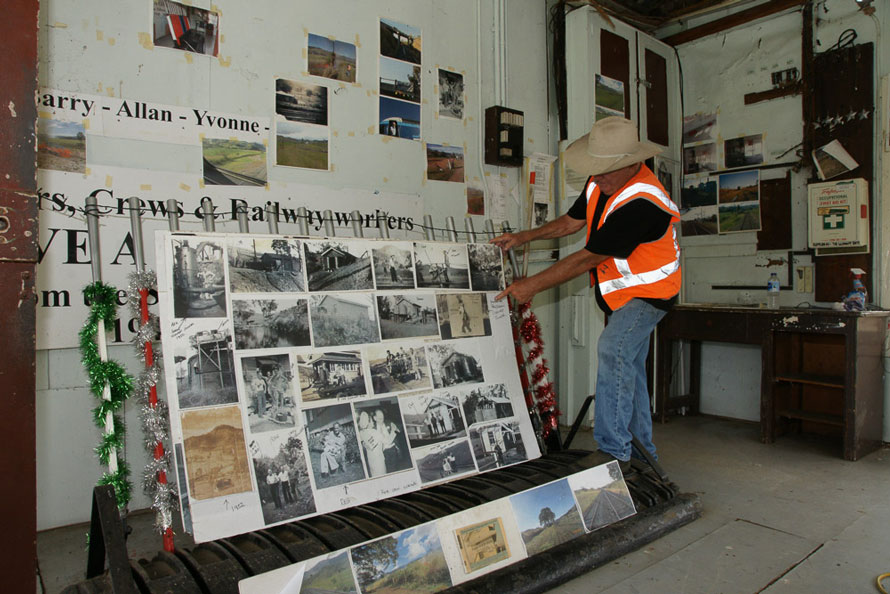
Perhaps it’s trying to keep alive those childhood memories and personal family ties to Glenapp that are part of the reason to keep coming back weekend after weekend. But as Rob continues to talk, it’s clear it’s not just that. “A lot of what we do here is for the drivers,” says Rob “We like to think that we are making a place that they can enjoy too.” Special occasions get special treatment: at Christmas and Easter, decorations appear to bring a sense of levity to the building, with drivers being greeted by reindeer, or Santa, or Easter eggs. The 100th anniversary of the World War I landings at Gallipoli were subject to their own set of decorations.
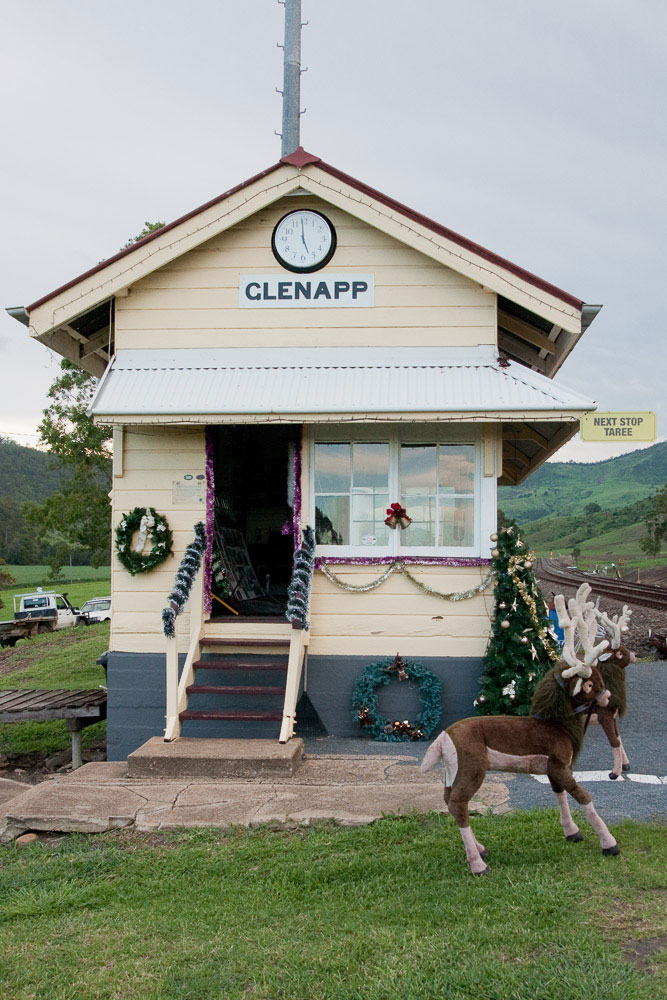
While Rob, Dennis and Alan have nostalgic family ties to Glenapp, drivers have more practical views. Ben Francis, one of Pacific National’s drivers who works the Acacia Ridge to Taree corridor, has his own perspective on working trains through Glenapp from the cab of the locomotive.
Back in the days of electric staff working, Glenapp was always the preferred loop of drivers if they needed to sit for a cross. “There were far fewer flies than at Bromelton and the staff hut at Glenapp was more spacious” said Ben. During winter, the two heaters mounted on the wall would be turned on 24 hours a day, since it was the only staff hut that was equipped with them. Ben recalls that drivers had to be careful not to stand on the frogs at night as they lived on the insects congregating under the light over the front door. The white ants did considerable damage to the ceiling of the hut, which led to a brown snake moving in. When pilot staff working was implemented as installation of the Remote Controlled Signalling marched north, the safeworking staff did not believe the reports of the snake sightings from the drivers. Ben can’t help noting that “it only took a few days of pilot staff working though, and a snake remover’s vehicle was soon seen at the hut.”
In summer, the grass around the hut would grow very tall not like, as Ben describes it “the well looked after corridor it is today under the care of the Glenapp Boys”. Ben says that drivers sometimes leave them the daily newspaper, as it reminds them of their childhood when they would receive newspapers from passengers on the passing trains. Ben says the effort the Glenapp Boys put in “is something we really appreciate, and most of us give a short blast on the horn as a simple acknowledgement when we see that they are there for the weekend.”
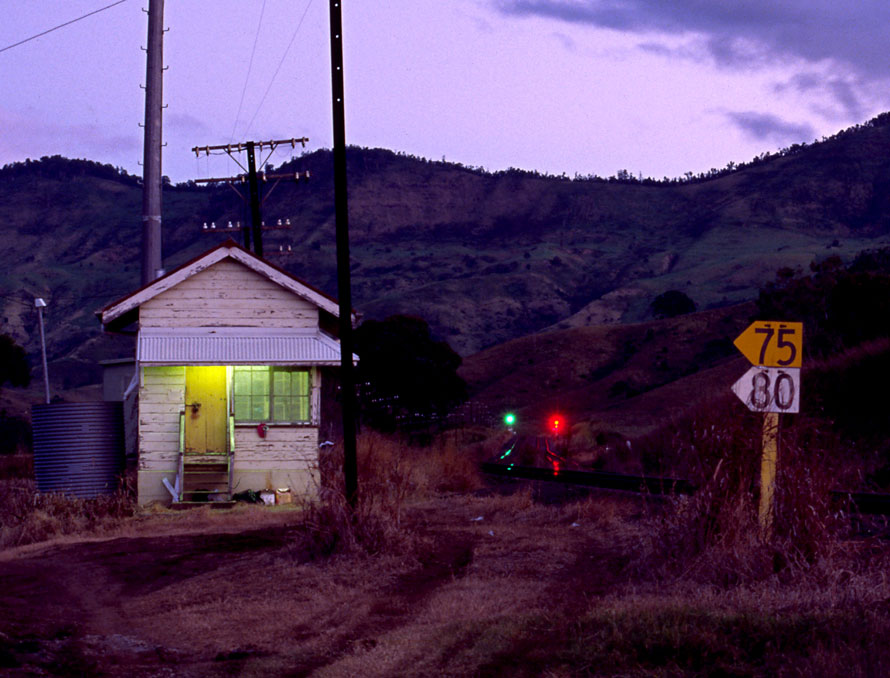
Rob and Dennis are used to being woken by drivers using their horns on their way through Glenapp, which is just as well since with the current timetables, trainwatching on this stretch of the north coast line is now almost exclusively a nocturnal affair.
While the drivers who run up and down the coast appreciate the effort put in by the Glenapp Boys, their efforts have also been noted elsewhere. Rob shows me a very impressive certificate presented to the Glenapp Boys by Pacific National, the major train operator on the corridor, in December 2011, thanking them “for all your support and making a safer environment for all Pacific National Staff.” Rob also recalls that when, in October 2013, the management of ARTC travelled through on the Rail Motor Society’s HPC 402 on a management and customer inspection tour of the North Coast line, the impromptu stop at Glenapp saw the efforts of the Glenapp Boys being well received by all present.
By now, we’ve walked back to where we started. Over another coffee, Rob and Dennis mention how much of the old water supply infrastructure they have found. While the main 100,000 gallon tank dominates, as their mowing and clearing extended, they came across the water cranes buried in dirt and the Tangye feedwater pump and boiler in the long grass down by the creek. The centrifugal pump that fed the main water tank turned up later too.
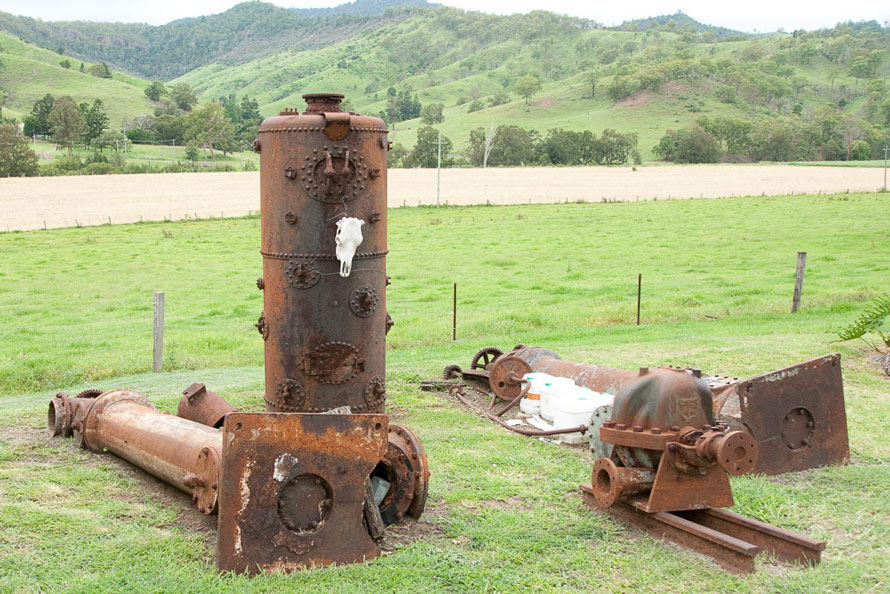
And plans for the future? Apart from the routine of keeping the grass under control, the Glenapp Boys would like to cosmetically restore the water infrastructure to be able to show future generations what it was like, and stabilize the signal cabin before it deteriorates further. “That’s going to be a big job,” says Dennis. “We’ll do what we can with what we can afford,” says Rob, “but it’s pretty far gone. A working power point would make life a lot easier though. This is our passion – it’s what keeps us going. Some people go camping, or fishing – but hail, rain or shine, we will be here, since this is what we do.”
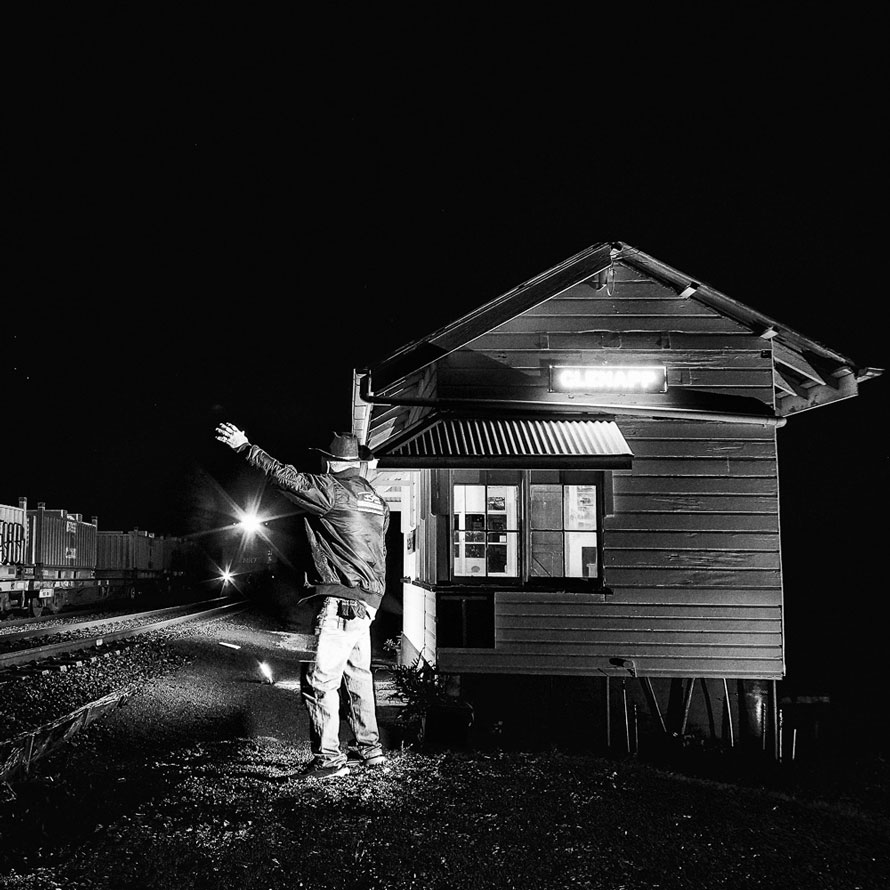
With that, I head back to Brisbane. As I leave, it finally occurs to me what that rustling sound I heard on the way in actually is—it’s the sound of grass growing.
Alan Shaw – Photographs and text Copyright 2018
See more of Alan’s work on his Flickr page
Note: This is a slightly modified version of The Glenapp Boys – Keeping the Dream Alive, which first appeared in Railway Digest, July 2015, and is used here with permission.
Great guys , I was a Kagaru boy back in the day , know many a legend from the lengths worked with Maurie Hotz ,Cecil Strow , live on the Goldcoast and seen your car stickers on Ute